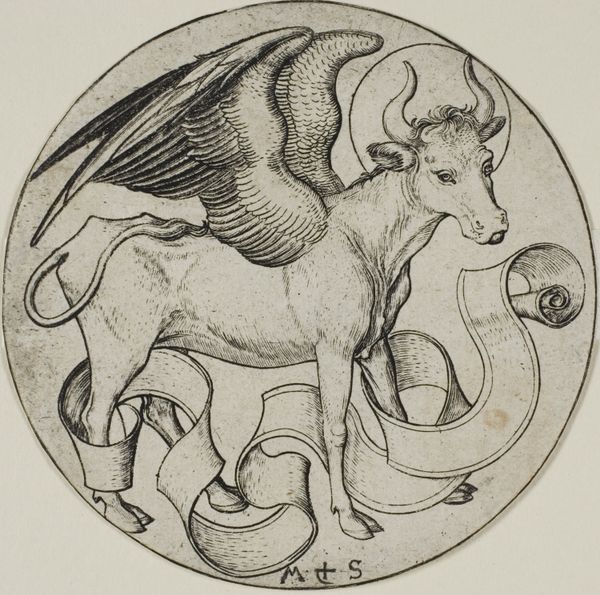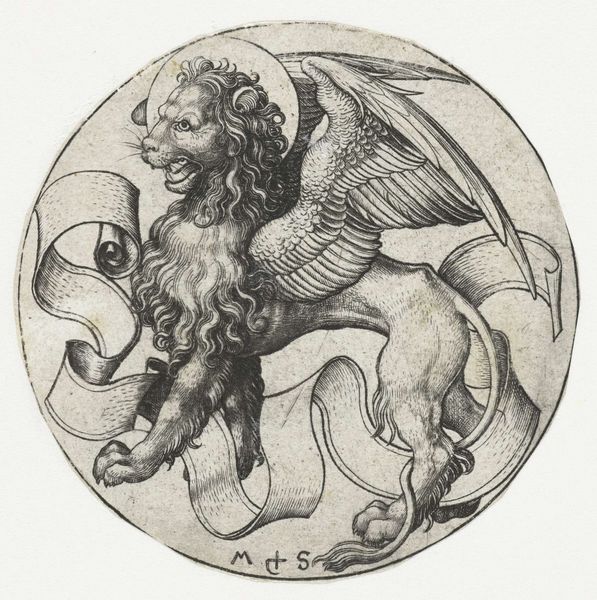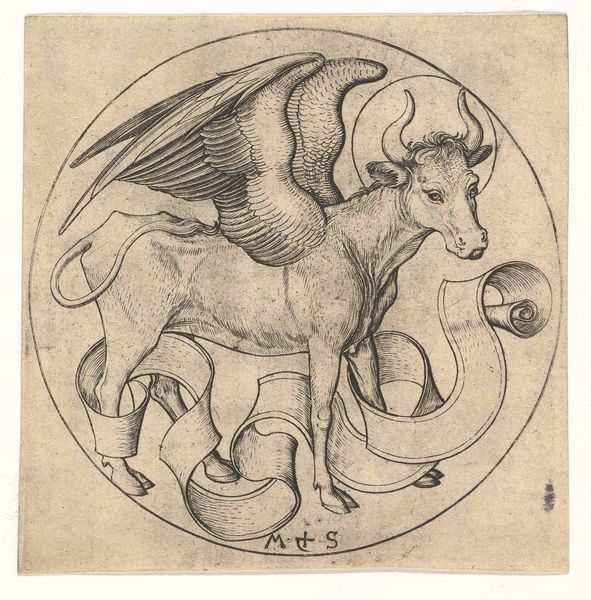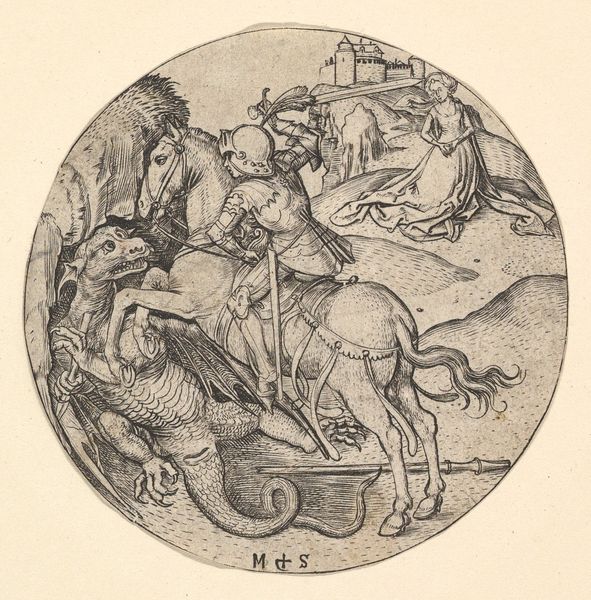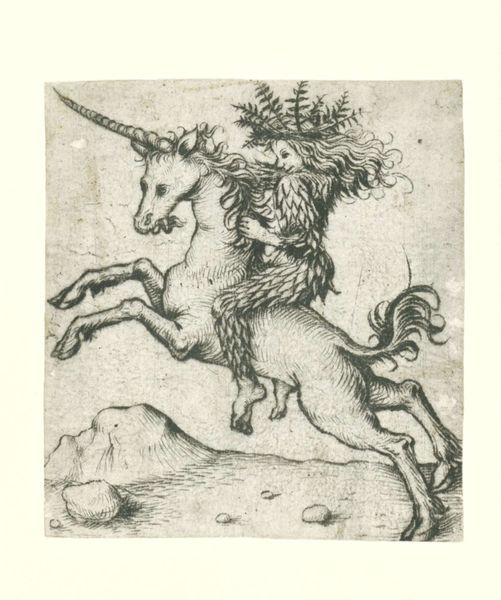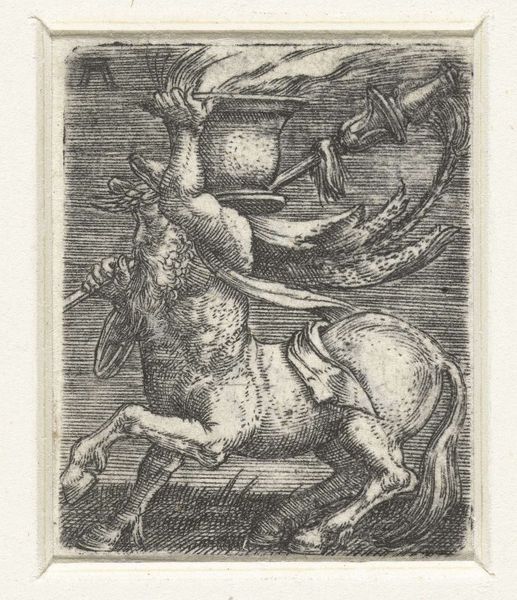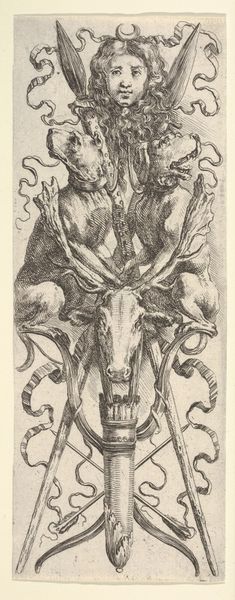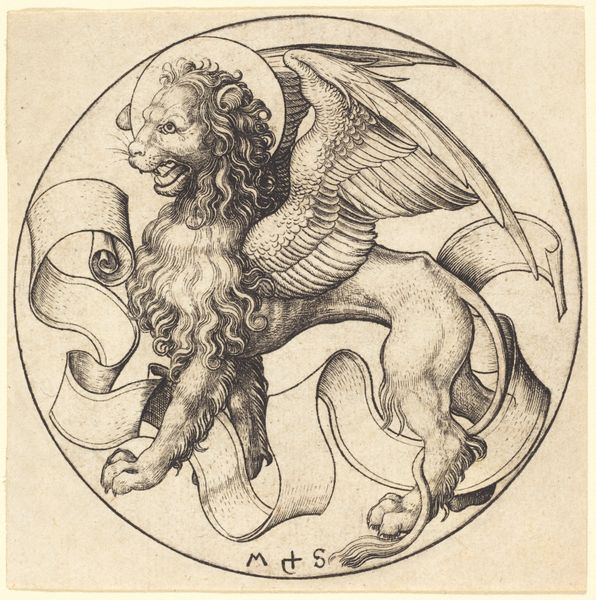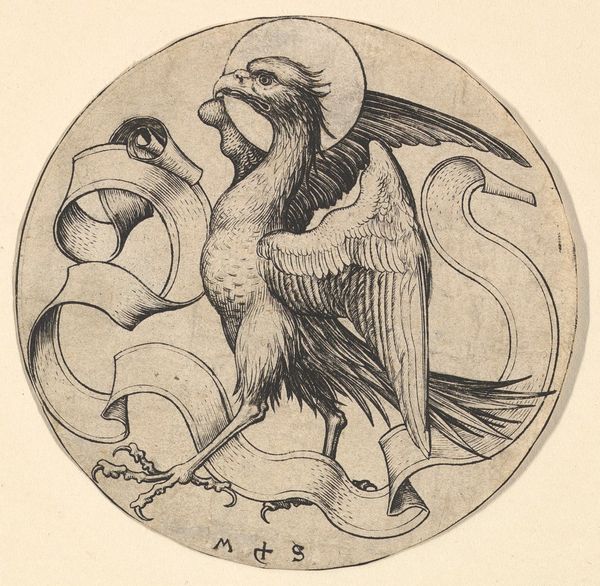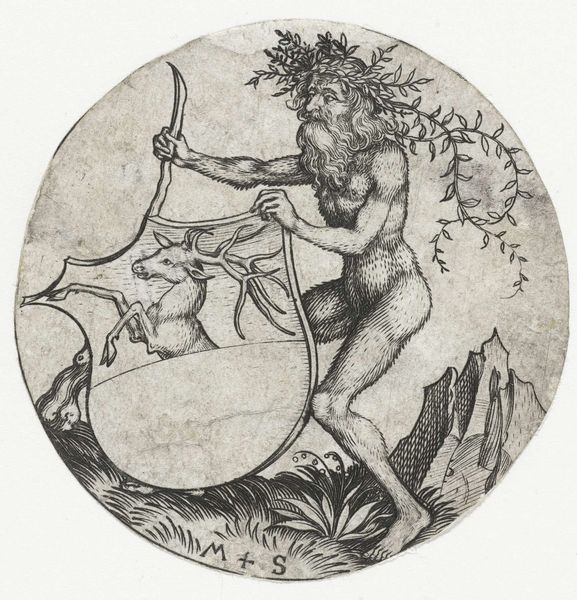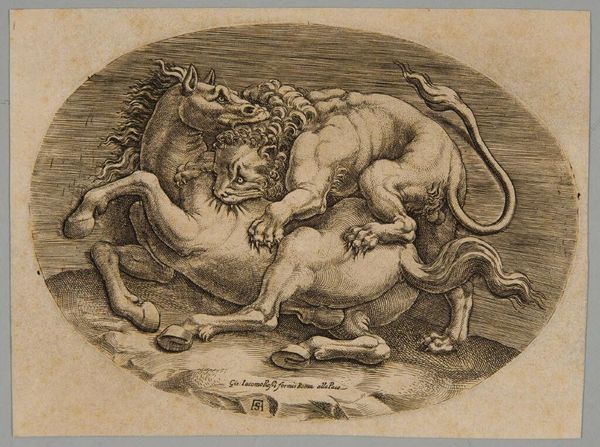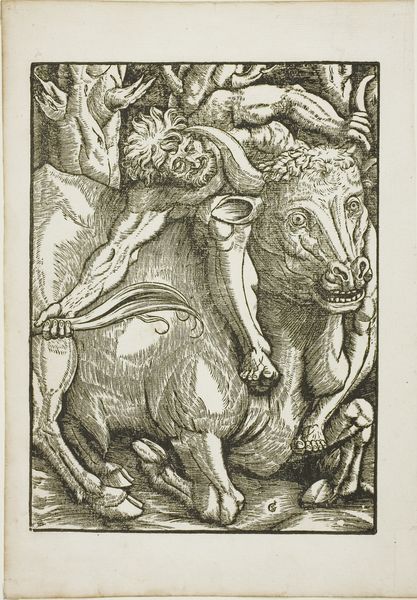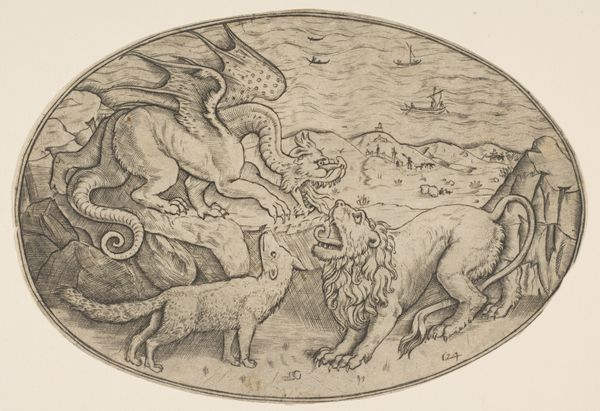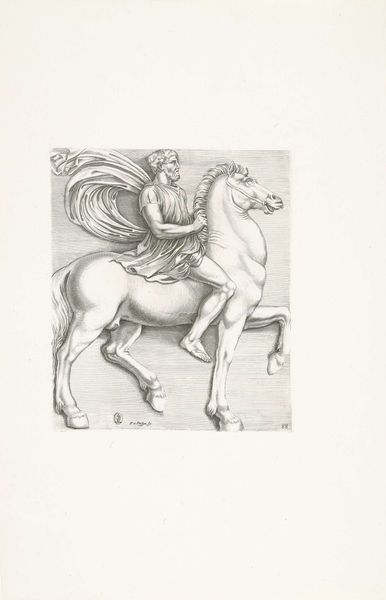
Copyright: Rijks Museum: Open Domain
Martin Schongauer, around 1480, rendered this copper engraving. It is an iconographic representation of Saint Luke, symbolized by a winged bull. The figure of the bull has ancient roots, symbolizing strength and sacrifice, seen in the Minoan bull-leaping rituals or the Apis bull worship in ancient Egypt. When Christianity adopted this symbol for Saint Luke, it represented Christ's sacrifice on the cross and the Gospel's emphasis on ritual and priesthood. Over time, the bull, once a deity, has transformed into an Evangelist's attribute. The collective memory, laden with ancient symbolism, still echoes in this image. It reminds us of the deep emotional and psychological connections between cultures and eras. We observe how ancient pagan symbols are reinterpreted, emphasizing a non-linear, cyclical progression, resurfacing, evolving, and acquiring new meanings in different historical contexts.
Comments
rijksmuseum about 2 years ago
⋮
Designed and engraved by Martin Schongauer, these symbols of the Four Evangelists were made specifically to serve as models for other artists and craftsmen. For example, the symbols on the tombstone of Elisabeth of Bavaria (1443-1484) in Leipzig, can be traced directly back to these prints. Like much of his work, these engravings were copied repeatedly by other printmakers, including Israhel van Meckenem.
Join the conversation
Join millions of artists and users on Artera today and experience the ultimate creative platform.
